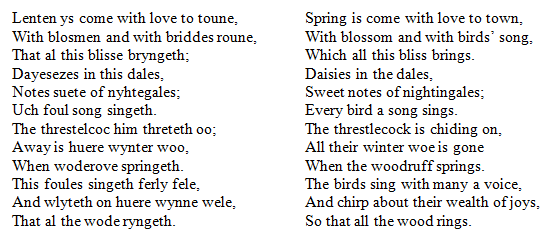02 / 05 / 2022
“Lenten ys come with love to toune…”
Yesterday in the Northern hemisphere we waved so long to winter and welcomed spring. at least in countries using the astronomical and solar reckoning, because in others countries, like Sweden, the beginning of spring is defined as the first occasion when the average daytime temperature exceeds zero degrees for seven consecutive days, so typically spring comes later in the north than in the south.
In early medieval Engand the usual word for this season was “Lenten”, a word that comes from the shortening of “lengthing days” and which Dutch still keeps (“lente”). The word “spring”, that didn’t catch on until the 16th century, is related to the verb “spring”, which in English means “to move or jump suddenly” and in Swedish it means “to run” (“springa”). If you have ever felt that in this season everything seems to move faster, the Germanic languages had already captured this feeling from the very beginning.
In Old English the word was “springan”, meaning “to leap, burst forth, fly up; spread, grow”, and further back, in the protolanguage shared by all Germanic tribes, the word was *sprengan (the asterisk means it is a reconstructed form), source also of Old Norse and Old Frisian springa, Middle Dutch springhen, Old High German springan, and German springen). We can even trace the origin to the times of Indoeuropean with the form *sprengh, meaning “to move, hasten, spring”, source also of Sanskrit sprhayati “desires eagerly” and Greek sperkhesthai “to hurry”.
In other languages, the season name is related to the word “fore” or “early”, like in German Frühling (from Middle German vrueje, “early”,) or in Swedish “vår” (“before”, related to Dutch “voorjaar”, literally “fore-year”.







